House of Lords Temporal
As I type this there's almost exactly a year to go until the last plausible date for the next UK general election. Now, this is a Doctor Who newsletter not a politics one. Don't worry. It's just that that, if you like, ticking clock made me think of those peculiar periods when a new Doctor Who has been announced, but we still have plenty of their predecessor's time-in-office left to go. Obviously the most extreme example of this is the entirety of the second David Tennant era, that of the Fourteenth Doctor, coming after the announcement of the casting of Ncuti Gatwa, the Fifteenth.
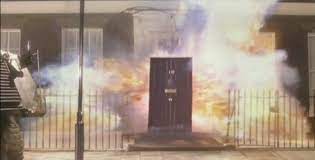
This has happened several times in the series before, and I'm not going to adumbrate them all; suffice to say, Colin Baker was offered the role of the Sixth Doctor before any of the final Peter Davison series had been shot, and his appointment announced to the press in August 1983 before even The Five Doctors had actually aired.
This juxtaposition then set me to wondering if there's any particular relationship between a UK Prime Minister and the Doctor Who shown while they’re in office. Can any of them be said to have had a measurable effect on the programme’s contents? Can we rank UK Prime Ministers in relation to Doctor Who? Probably not. But it's worth a try.
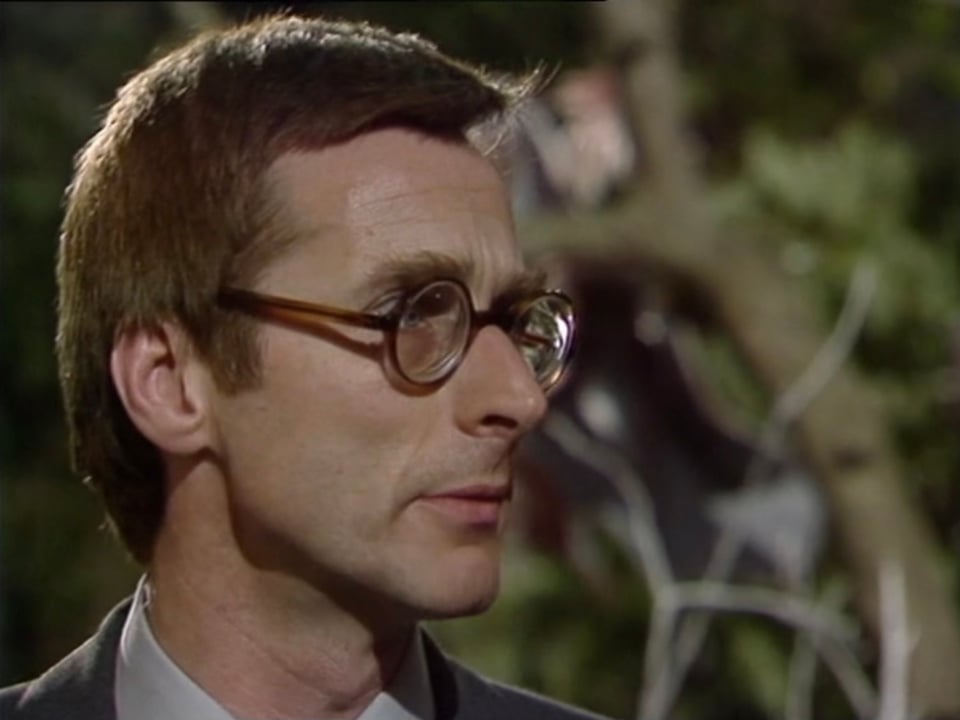
13) John Major (1990-97)
Minutes of Doctor Who - c84m
Doctors - 2
For fandom, the 1990s was an era of anticipation. Of waiting for the series to come back. 20th century Doctor Who ended in 1989, shortly after Major became Thatcher’s final chancellor, leaving the Paul McGann starring 1996 television movie as the sole Doctor Who television production of both the 1990s and his premiership.
John Major felt like a caretaker Prime Minister for almost all his time in office, between the curious political matricide that was the fall of Thatcher and the always inevitable seeming 1997 election loss. Only in the brief months between the 1992 election and Black Wednesday did he really have any stature. Which makes it hard to realise his nearly seven year ministry makes him the twentieth longest serving UK Prime Minister, and the ninth longest serving since 1900. None of which was much help to him when it came to Doctor Who, but does oddly reflect the state of the programme at the time.
Back in 1980, when Major was a newly elected government backbencher, a character with a remarkable resemblance to him appeared in the Doctor Who story Meglos. That’s a coincidence, of course, but the actor in that role, Christopher Owen, later played a Major avatar in House of Cards (1990) and To Play The King (1993). It's all connected.
12) Liz Truss (2022-2022)
Minutes of Doctor Who - c87m
Doctors - 2
Although Liz Truss' premiership will be a grim punchline for much of a century, it could have been worse for her. If the parliamentary Conservative Party had got its act together a whole 48 hours earlier, she'd have become the first UK Prime Minister since Harold MacMillan to have no Doctor Who transmitted during her ministry; and even MacMillan had some Doctor Who made during his premiership. With production of The Power of the Doctor being more or less completed a whole year before transmission, Truss didn't even manage that. Even David Tennant's surprise cameo was shot during the long exit of her predecessor. She sneaks above Major due to the number of minutes in her single episode, and even then PAL speed up makes it ambiguous. Which is probably the only even vaguely positive achievement of her time in office and, of course, nothing to do with her at all.
11) Rishi Sunak (2022-c2024)
Minutes of Doctor Who - c240m
Doctors -2
As the incumbent, obviously the numbers above will change. Sunak is likely to add the eight confirmed episodes of the May 2024 series to his tally. Unless his increasingly kamikaze parliamentary party decides to remove him. If he makes it that far, he may decide to go for one last Doctor Who Christmas special in Downing Street with a general election on the last legally possible day.
10) Boris Johnson (2019-2022)
Minutes of Doctor Who - c1,015m
Doctors - 2
Well, he fought and lied for his entire life to reach #10, and here he is. Like his immediate predecessor, of whom more shortly, Johnson's administration was ended by internal party manoeuvres that were largely the fault of one Boris Johnson. Also like his immediate predecessor Johnson faced being UK PM for much of a year Doctor Who decided to skip for production reasons. In another weird parallel, he spent much of his later time in office being haunted by the spectre of a theoretical replacement thanks to newspaper speculation. This was also a fate he'd forced onto said predecessor, and similar to what Jodie Whittaker's Doctor (unfairly) faced in some press reports after the first appearance of the Fugitive Doctor, as played (splendidly) by Jo Martin. In Doctor Who's case, it was obviously without justification. But any comparisons between the diverse and aiming-for-progressive era of the Thirteenth Doctor and Johnson's administration would flatter the latter. Let's just say that while both broadcast to the nation during the darkest days of the pandemic, only one of them got it right.
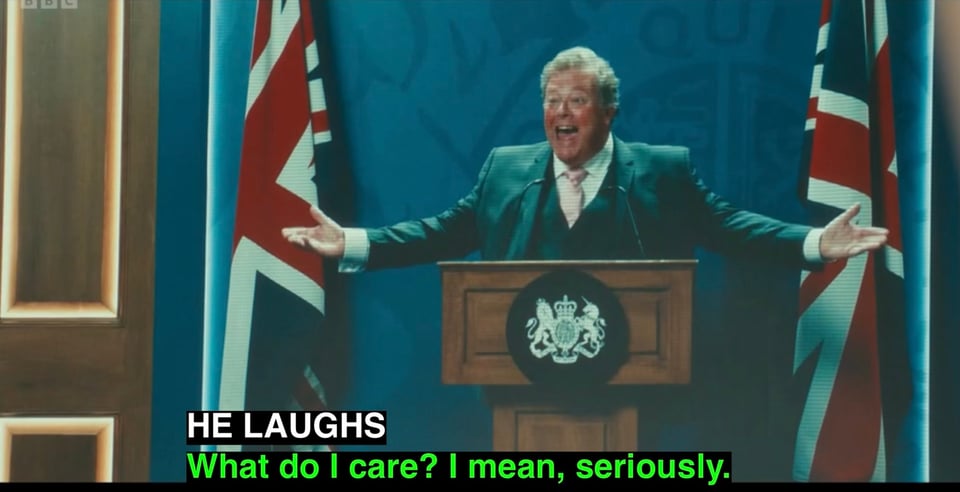
09) Theresa May (2016-2019)
Minutes of Doctor Who - c1,240m
Doctors - 2
Theresa May became Prime Minister during 2016, a year that there was no series of Doctor Who, and only one special episode, The Return of Doctor Mysterio. Given the general revulsion many felt for the year 2016 by its end is it ultimately surprising that a Time Lord, knowing the future as they do, decided to give the whole year a miss except Christmas? She soon caught up however, as the Capaldi / Moffat era came to an end and the Whittaker / Chibnall one was ushered in, and that despite another pretty big break in the middle of that, and another after the final episode of her ministry Resolution.It's a measure of both the speed of political events and the slow pace of Doctor Who's production at the time that a sequel to that episode, Revolution of the Daleks, transmitted two years later, features a British Prime Minister clearly intended as a kind of May analogue, and it was transmitted when she'd been out of office for 18 months.
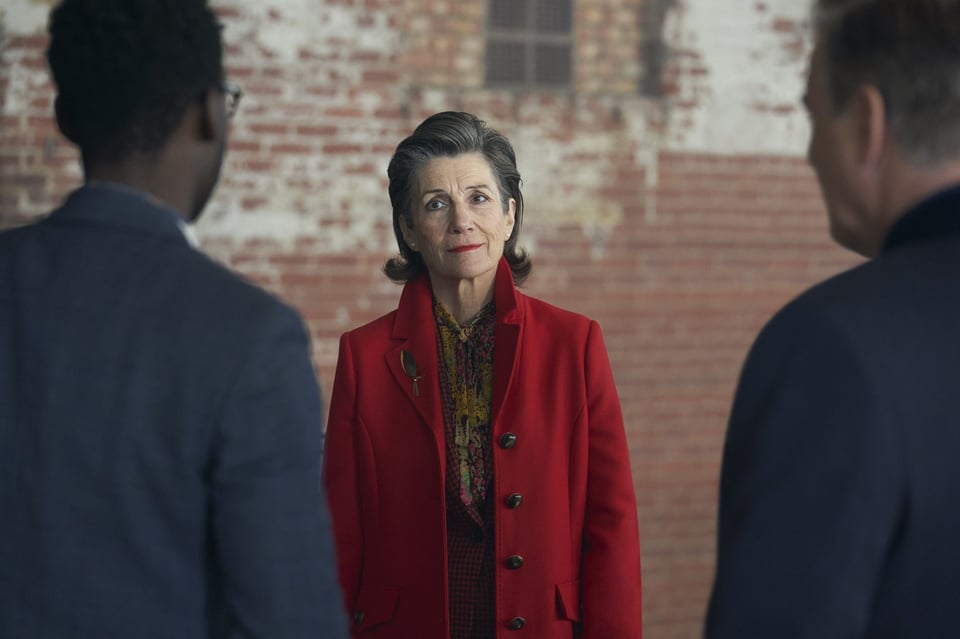
08) Sir Alec Douglas-Home (1963-64)
Minutes of Doctor Who - c1,050m.
Doctors - 1
In the beginning - Sir Alec Douglas-Home, or the Earl of Home as he was then, visited the Palace in order to be asked to form a government by the late Queen while the first episode of Doctor Who was being recorded. As the papers that Friday morning had confidently asserted that Rab Butler would be Harold MacMillan’s successor, this raises not only the possibility of the cast and crew of An Unearthly Child emerging blinking from Lime Grove Studio D to discover the Prime Minister had changed, and to someone other than whom they’d expected. Which is a bit like the end of The Power of the Doctor 59 years later. If you squint.
Home’s brief premiership of just under a year saw the transmission of what we now think of as the first series of Doctor Who, 42 episodes from An Unearthly Child to Prisoners of Conciergerie, including the first bout of "Dalekmania". A few years later film critic Alexander Walker would claim that the Daleks sounded like Home’s successor Harold Wilson. Whether he also saw parallels between Home’s benevolent Victorian patriarch act and William Hartnell’s remains unknown.
07) Gordon Brown (2007-2010)
Minutes of Doctor Who - c1,347m
Doctors - 2
Gordon Brown succeeded Tony Blair as Prime Minister during the closing trilogy of the 2007 series of Doctor Who, in which John Simm’s Master becomes Prime Minister himself. How’s that for brand synergy? Towards the end of the Brown government, Matt Smith replaced David Tennant as Doctor Who, and at the same time Steven Moffat took over from Russell T Davies as the series Executive Producer.
The three Christmas specials aired during Brown’s premiership were watched by more than 12m people. Two of them by more than 13m, representing one of the series’s peaks of popularity, and the first time Doctor Who had cracked this many viewers since 1979. Of which more later.
Two of the last episodes of the Brown era featured Winston Churchill, played by Iain McNeice, and he was characterised as an old friend of the Doctor’s. This was the first time a real British Prime Minister had been played onscreen by an actor in Doctor Who. What’s even odder is that Churchill died in 1965, after Doctor Who was already up and running. So he could quite easily have seen any Doctor Who episode up to All Roads Lead To Rome. But probably didn’t. If someone could ask Nicholas Soames, just so we can be sure, I’d be grateful.
06) Tony Blair (1997-2007)
Minutes of Doctor Who - c1,830m
Doctors - 2
Blair was Prime Minister when Russell T Davies revived Doctor Who in 2005, although he was already then past late 1990s peak in terms of popularity. The first episode recorded of the RTD era, Aliens of London, features the corpse of a murdered Prime Minister, although to Tony’s presumed relief, it doesn’t look much like him.
A character in that story, Harriet Jones MP (later to be a fictional Prime Minister within Doctor Who) subtly identifies herself as part of New Labour by self-deprecatingly saying she’s "Hardly one of the [Blair’s] Babes" referring to the then much commented upon influx of women Labour MPs at the 1997 election. Aliens of London also features a barbed reference to “massive weapons of destruction” that could be deployed in “45 seconds”. Wonder where they got that idea from.
An odd aspect of Aliens of London is that a parliamentary committee chairman Joseph Green (who is actually an alien Slitheen) automatically becomes Acting Prime Minister because he’s the only member of the government in London during the crisis that unfolds across the story. Which suggests that the UK has a prime ministerial succession plan, much like the one in the US constitution, and also that committee chairman are government ministers. Neither of which are true.
Aliens of London also features Christopher Eccleston’s Doctor mentioning a friendship with David Lloyd George, and at the start of the next series David Tennant’s Doctor pulls a face having mentioned Margaret Thatcher. Three weeks later, in Rise of the Cybermen, Blair became the first real life UK Prime Minister to be mentioned in Doctor Who while still in office. Two weeks after that, the Doctor and Rose visit 1950s England and namecheck then Prime Minister Churchill. This flurry of Prime Ministerial mentions is all the more notable because the only real Prime Ministers mentioned by name in 20th century Doctor Who are quintessential nepo baby Lord Salisbury (1885-1886, 1886-1892, 1895-1902) and the almost forgotten Andrew Bonar Law (1922-23). They are jointly the subject of a barbed line of dialogue in Horror of Fang Rock (1977), a story set in the first decade of the twentieth century. Which hardly counts as topical satire. It does work as a character note for Colonel Skinsale, however. As two of the few men ever to make him uneasy have had the ambition and ruthlessness to become Prime Minister. But one of them long after Skinsale's own death. Another Prime Minister is alluded to in old money Doctor Who; Arthur Wellesley, 1st Duke of Wellington (1828-30, 1834) is the “Iron Duke” mentioned in dialogue in The Dancing Floor by the military fantasist Sergeant Rugg. There, as is usually the case, Wellington is being remembered for his successes as military commander, rather than his stints as First Lord of the Treasury.
05) James Callaghan (1976-1979)
Minutes of Doctor Who - c1,950m
Doctors - 1
With Labour already in power, Callaghan was elected its leader and succeeded as Prime Minister between the thirteenth and fourteenth series of Doctor Who, while Tom Baker was in the title role.
Exactly like the Doctor Who of this period, Callaghan’s ministry started out with considerable popularity, imagination and a great deal of style, yet became somewhat exhausted and ragged looking by Spring 1979. The Sun Makers made as part of the fifteenth series (1977) would be a not-exactly-subtle wannabe "satire" on his government’s taxation policy seemingly written, apparently, by a scriptwriter, Robert Holmes, annoyed that he’d forgotten to pay income tax on his freelance income and was thus facing a large bill. Which he then commissioned himself to write a script about in order to pay it. My heart bleeds.
Callaghan’s chancellor, rather than Callaghan himself, was the one singled out for censure by The Sun Makers, with the story’s villain’s appearance modelled, in part, on Denis Healy’s. Callaghan had in fact been in the Navy with previous Doctor Who Jon Pertwee during World War Two, and Pertwee talked fondly about him in his one man show.
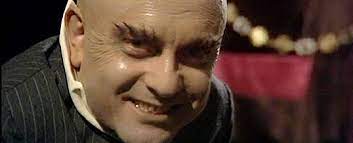
04) Edward Heath (1970-74)
Minutes of Doctor Who - c2,200m
Doctors - 1
Ted Heath’s ministry started between the first and second Jon Pertwee series of Doctor Who, and coincided with a big upswing in the programme’s popularity: The 1972 series of Doctor Who featuring episodes watched by more than 10m people for the first time since 1965. While Heath’s government was almost permanently embattled, this is a period in which Doctor Who is in one of its occasional pomps, spanning the middle three Pertwee series and the celebrations surrounding the programme’s tenth anniversary. The 1972 serial The Curse of Peladon, about a barbaric and largely mediaeval planet applying to join a peaceful space confederation and trading bloc, has been widely interpreted as Doctor Who’s take on the UK’s accession to the then-EEC. The series was very much pro the UK/Peladon joining, and thus in accordance with Heath’s own view, but a lot of viewers may never have found that out as the 1972 miners strike meant much of the country couldn’t see Parts Three and Four of the serial.
The first new Doctor Who story after the early 1974 general election unexpectedly resulted in a hung parliament and the total collapse of Heath’s authority was The Monster of Peladon. It was sequel to the above, and both featured a character called Alpha Centauri. In a baffling coincidence, Centauri did not appear in the series again until Empress of Mars, the first new Doctor Who story after the early 2017 general election unexpectedly resulted in a hung parliament and the total collapse of Theresa May’s authority.
And another thing: The Green Death, also transmitted while Heath was Prime Minister, actually features a scene with a British Prime Minister for the first time in Doctor Who. Like many stories of the early seventies, The Green Death is ostensibly set in the then near future, although exactly when has long been a point of consternation between Doctor Who fans. That Prime Minister’s name? Jeremy. Liberal voting 1970s producer Barry Letts had future dog murderer Jeremy Thorpe in mind, of course. But don't think the Labour leadership of Jeremy Corbyn or the Tory leadership campaign of Jeremy Hunt didn't cause a few hearts to flutter in opposing corners of Doctor Who fandom, at the possibility that the UNIT dating conundrum might finally be solved.
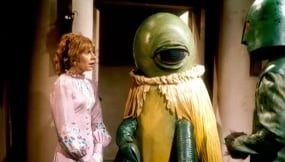
03) David Cameron (2010-16)
Minutes of Doctor Who - 3,018m
Doctors - 3
As with Major, it’s quite hard to believe Cameron was Prime Minister for as long as he was. Unlike Major, Cameron governed a country where Doctor Who was on every year. The Radio Times cover for the week of the General Election that brought Cameron to power featured the Daleks, was available in three colours (red, blue and yellow) and featured the words "Vote Dalek". It’s a hugely memorable image, but something of a boon to those who consider Cameron the "heir to Blair", to quote a now neglected phrase. The Radio Times for the week of the 2005 General Election also featured a Dalek and the words "Vote Dalek". There was no choice of colours, though. Probably reflecting the essential truth that the result of that election was never in doubt. Doctor Who’s golden jubilee occurred during the Cameron government, the series seeing in its fiftieth year as it had its first episode, with a Scottish old Etonian Conservative Prime Minister in 10 Downing Street.
02) Margaret Thatcher (1979-1990)
Minutes of Doctor Who - c5,115m
Doctors - 4
Thatcher’s rise to power was predicted by Doctor Who in 1975, when the story Terror of the Zygons, set, like the aforementioned The Green Death, in the near future, had someone answer the telephone to the Prime Minister and refer to her a "Madam". We shouldn’t given them too much credit for prescience, however. She was already Leader of the Opposition at the time.
Despite Thatcher’s reputation as a union basher, or maybe because of it, she’s the only Prime Minister to see Doctor Who episodes cancelled mid production due to strikes. The 1979 series lost six episodes due to industrial unrest. The 1983 series lost four. On top of that, the 1984 series had to rush produce its opening story, Warriors of the Deep, when BBC studio space suddenly became scarce following the announcement of the 1983 general election.
By some measures Doctor Who’s ratings peaked at the beginning of Thatcher’s premiership, with the first eight episodes show during her ministry seen by more than 12m, and one by more 16m people, but that too was down to strikes. ITV was off the air for months and viewers were stuck with either Doctor Who or BBC Two. Which was showing socially conscious documentaries made by the BBC Community Programme Unit.
The Thatcher government outlived four Doctors Who and the programme itself. She was Prime Minister for so long, and became so ubiquitous and divisive, several 1980s serials feature villains modelled on her. The 1988 serial The Happiness Patrol, which featured Sheila Hancock doing a Thatcher impression as dictator Helen A is now rather well known, even celebrated, and managed to cause a controversy about supposed BBC bias in recent years, after the series then script editor Andrew Cartmel mentioned it in a retrospective interview.
It’s not the only example though. The 1985 series in particular, has three Thatcher avatars, one of whom, the Rani, is a former research chemist whose evil scheme involves the brutalisation of a group of northwest english miners. The story is set in 1813, not 1984, but as its writers, husband and wife team Pip and Jane Baker, met while campaigning for Hanger Lane Labour party in the 1950s, it’s hard not to believe the comparison was deliberate.
By the time Doctor Who came back properly in 2005, the last general election Thatcher fought, and the last during twentieth century Doctor Who’s run, that of 1987, was sufficiently long ago that it features briefly as "historical colour" in the episode Father’s Day, which portrays the younger days of companion Rose Tyler’s parents.
Doctor Who’s most significant brush with Thatcher, however, didn’t come on television. In 1989 there was a Doctor Who stage play The Ultimate Adventure, which starred Jon Pertwee and then later Colin Baker as the Doctor. In both versions, Thatcher featured as a character, summoning the Doctor to Downing Street at the beginning of the story and sending him on a mission, like M does with James Bond. No, she’s not revealed as the villain at the play’s end, but the Doctors’ attitude to here are interesting. The Pertwee Doctor kisses her hand and calls her "Margaret", and even "dear lady", whereas Baker’s incarnation dismissively calls her "Maggie". Baker even considered adding a line about her "...moaning about Europe" but decided it was "too political" for a family audience. Both Doctors, however, when out of earshot, confide to the audience that, "I can cope with most things in the cosmos from Daleks to dinosaurs, but that woman terrifies me."
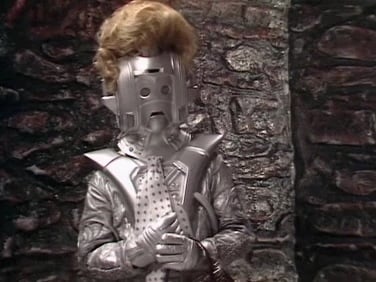
01) Harold Wilson (1964-70, 74-76)
Minutes of Doctor Who - c7,425m
Doctors - 4
Although he was Prime Minister for more of Doctor Who than anyone else, Harold Wilson didn’t manage to get mentioned in it until 2017 when he was namechecked, along with Anthony Eden, Thatcher (again) and the fictional Harriet Jones in Knock Knock, when the Doctor asks the seemingly disassociated Landlord who the current Prime Minister is. (Knock Knock, incidentally, feels like a modern version of those Thatcher bashing 1980s serials, or The Sun Makers, given its strange nature as a horror story reflecting the housing crisis.)
Wilson came to power between the first two series of Doctor Who, and left office for the first time after Inferno, the climax of the first Jon Petwee series. That’s a good six years, most of which Doctor Who was on for around forty weeks of. During Wilson’s premiership Doctor Who achieved new heights of popularity, with the 1965 series in particular often being watched by more than 13m people. Wilson remained in office for the remainder of First Doctor William Hartnell’s era, and all of Patrick Troughton’s time on the programme. When Labour unexpectedly lost the 1970 General Election, after a year of Jon Pertwee’s Third Doctor, Wilson was faced with the possibility of watch the 1972 series somewhere other than Downing Street. Assuming he ever watched it at all.
On 15th February 1974 it was announced that Tom Baker would be taking over as the Doctor at the end of the then current series. This was a week after then Prime Minister Edward Heath had called a General Election. Wilson, who had remained Labour Leader and Leader of the Opposition after his 1970 loss, unexpectedly became Prime Minister again at that election, which was held during transmission of Death to the Daleks, and so was in office to see in the Fourth Doctor three months later. Tom Baker’s first series, a little less than a year later, saw the programme watched by 13m viewers for the first time since 1965. Curiously, both the 1965 and 1975 stories featured giant insects.
Which brings us to our final odd fact. With the exception of 1979, every Doctor Who episode watched by more than 13m people was shown during the early days of a new Labour Prime Minister.
Given the current polling, we should have our fingers crossed for the 2025 series, right?
